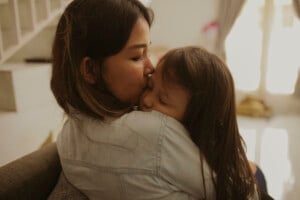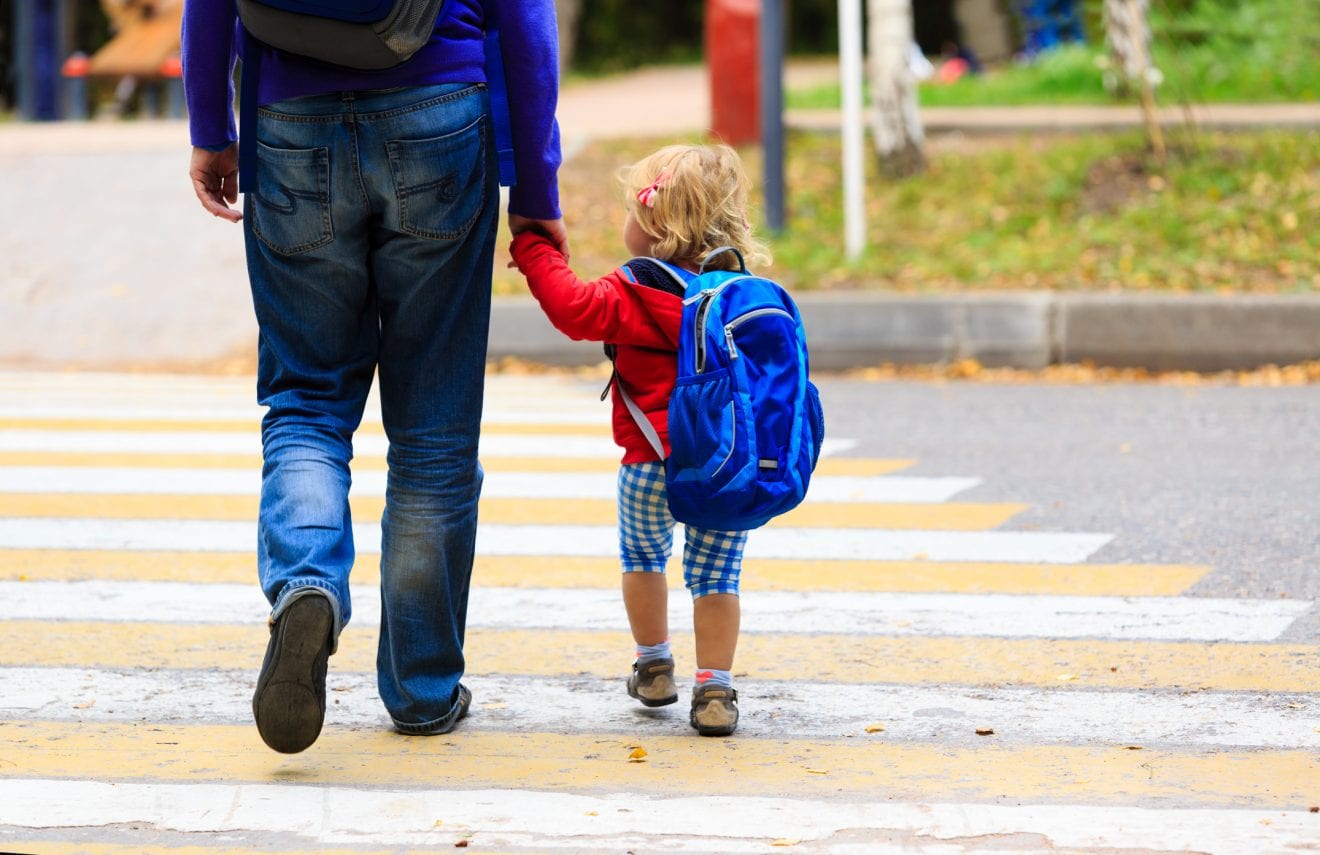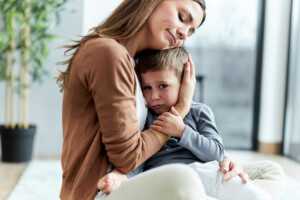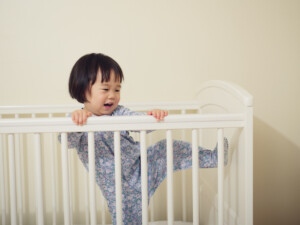The process of dropping your child off isn’t always easy. Whether your baby or preschooler goes to daycare or you have a babysitter come over a few times a week, saying goodbye can be rough. Even dropping your child off at grandma’s house can elicit a tearful response from your child . . . and she’s his grandmother! Through my experience as a mom, babysitter, teacher, and school administrator, I’ve assembled a few tips that I have found helpful in making the “goodbye” process easier.
Why Do Kids Get So Upset When We Leave?
It’s normal for children to experience separation anxiety from infancy up until the age of about 3. In essence, separation anxiety is the distress they experience when they say goodbye to their primary caregiver.4 You might see them crying or being clingy. They may even try to avoid situations where they know they must separate from their parent.5 There are several reasons why separation anxiety occurs, including:4,5
- Developmental stage – Until children learn object permanence, separation can be challenging. Object permanence is the understanding that things still exist despite being unable to see them (which is why peekaboo is such a great game!). Until they develop this cognitive skill, many children experience distress because they don’t understand that you still exist and will return for them.
- Survival – Our little ones rely on us for survival. Once they understand that we can leave them, it can create distress. This makes sense if you think about it from a survival instinct. They need us around, so they use all their skills to communicate that we should come back . . . immediately!
- Stress or adverse life events – If there have been some big changes in your child’s life, it can impact their separation anxiety. These changes could be illness, death, moving to a new home, parents separating, etc.
- Temperament – Some kids are more sensitive and less able to handle strong emotions, and they will have a bigger emotional response to separation.
How To Say Goodbye at Drop-Off
At these times, remember that your little one is constantly going through new developmental stages. As a result, it may be easy to drop them off at childcare and say goodbye one day, while the next day, they might cry and find it nearly impossible to let go of you! To help make the drop-off process easier, here are some helpful tips:
1. Create a Consistent Routine Before Drop-Off
Children thrive off of a consistent routine.3 Predictability can help them better cope with the often unpredictable emotions they may feel at any given moment. A set routine lets them know what they can expect at certain times of the day. This gives your child a sense of security.3 For example, your morning routine might involve changing your little one’s diaper, feeding them breakfast or a bottle, and giving them a hug or having cuddle time before you drop them off. This ensures a pattern that leaves them feeling well-cared for before you say goodbye.
2. Let Your Child Know That You Will Come Back
Even if your little one is under 1 year old, get in the habit of letting your child know that you’re leaving and when they can expect you to return.3 This can help establish a line of communication and a bond of trust between you and your child. If they are sensitive about you leaving, sneaking out the door when they aren’t looking typically doesn’t work. It may even backfire because when your child realizes you are no longer there, they may cry. This lack of communication reinforces feelings of abandonment and may worsen the situation. Ultimately, you want your child to understand that you will come back and that it’s okay for them to stay in this new place without you.
3. Don’t Stay Too Long at Drop-Off
Lingering at your child’s daycare or in the room with a babysitter can cause your child some measure of confusion. It can ultimately make it harder to part when saying goodbye. If it’s your child’s first time with the sitter or childcare provider, you may stay longer to help them acclimate and get comfortable. Otherwise, it’s better to give your little one a quick hug, tell them when you’ll be back, and say bye.
For instance, I once had a parent who tried to stay for almost 20 minutes every time she dropped her preschooler off in my class, even though her child was fine. I gently told her that this process did not benefit her son. He would circle back, confused as to why she was still there. It also caused stress and confusion for other children who didn’t understand why one mommy stayed while their parents had left.
4. Encourage Distractions
Another tip is to encourage distractions during the drop-off process. Allow the caregiver to distract your child with a toy, activity, etc. Be sure to say goodbye, but release your child’s attention and help the caregiver take over with their method of distraction without injecting your own.
5. Be Aware of Your Emotions — Your Child Will Pick Op on Them
Your little one is a sponge and highly sensitive to how you feel, what you say, and what you do. Babies and young children are biologically designed to depend entirely on their caregivers at this early stage. They are greatly attuned to what their caregivers are feeling.1 This means your little one may absorb and copy some of your emotions. With this in mind, it can be helpful to put on an upbeat face for junior when you say goodbye to leave them with a sense that everything is okay.
I’m not suggesting stuffing your feelings. If it’s hard for you to say goodbye and you feel sad, it’s healthy to address those feelings with another adult. You could even talk with your little one about what saying goodbye feels like. But do this outside the classroom, not when you’re about to leave your child (i.e., at home together on the weekend).
6. Talk to Your Caregiver
Maintaining an open line of communication with your child’s caregiver helps in all areas of your child’s development, including navigating the drop-off process. Have a conversation with your caregiver about what to expect at drop-off. Also, tell them about any fears, hopes, or expectations you may have related to the experience.
It is perfectly normal to have some anxiety around saying goodbye to your little one when you drop them off with a new caregiver. Ideally, have this conversation with your childcare provider before the drop-off — for example, via e-mail, an in-person classroom meeting, or a phone call.
7. Understand What Stage of Development Your Child Is Going Through
The American Academy of Pediatrics notes that separation anxiety generally peaks between 10 and 18 months. It should decrease during the last half of the second year.2 Be aware that your child may go through periods of ease at drop-off, followed by weeks of difficulty saying goodbye. This is not necessarily a reflection on your methods or caregivers. It may be as simple as a change in their cognitive development. Additionally, your child is more vulnerable to separation anxiety when they feel tired, hungry, or sick. Keep that in mind if the struggle seems sudden or out of the ordinary.
If the crying is constant and happens consistently for months, you may want to consider a different childcare option. Listen to what your gut is telling you. If you feel strongly that the childcare situation is not best for your child, consider turning to friends, family, or other reliable sources to find an alternative childcare option. Likely, the caregiver you’ve chosen is great, and your little one’s separation anxiety will pass within weeks.
I hope these tips will be helpful for you. Soon, saying goodbye at drop-off will be a quick and easy affair. And before you know it, you’ll be crying as you drop them off at college!






























